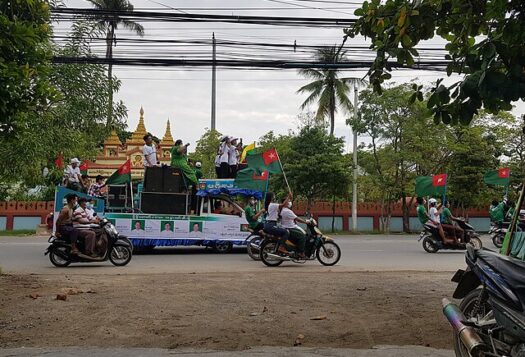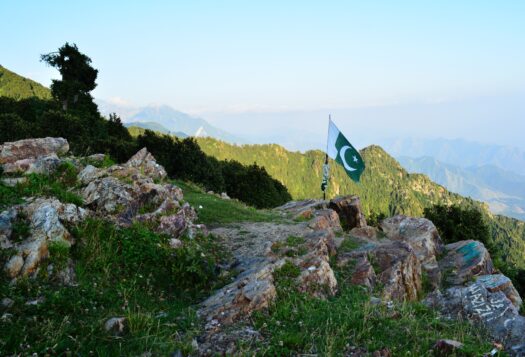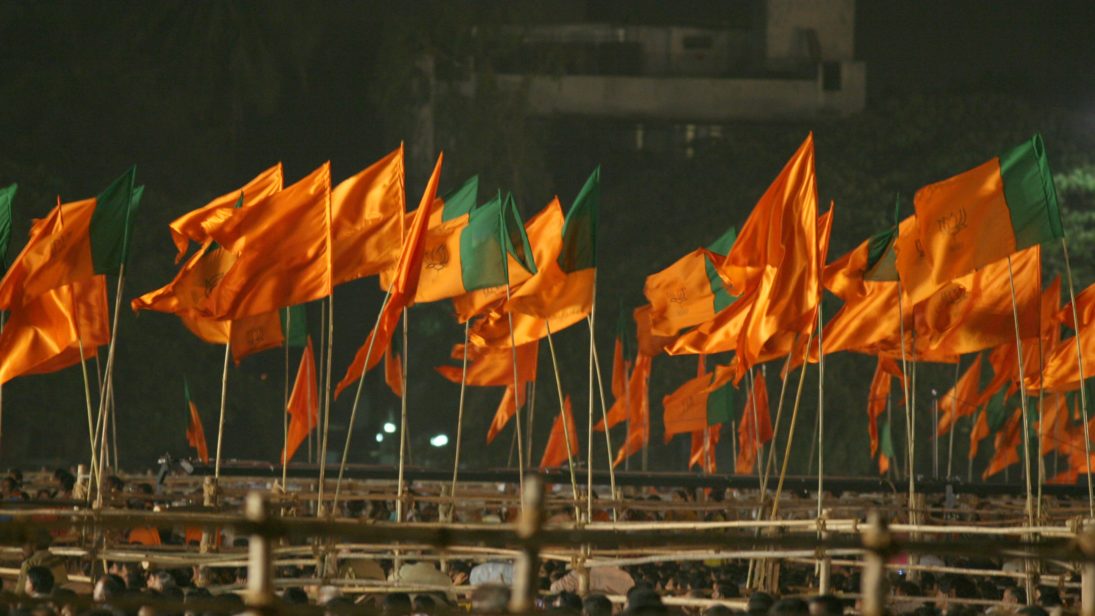
In this new series, SAV talks to scholars and practitioners to understand the trends and potential inflection points in South Asian security.
In an email interview with SAV Deputy Editor Emily Tallo, Dr. Paul Staniland, Associate Professor of Political Science and Chair of the Committee on International Relations at the University of Chicago, discussed civil-military relations in South Asia, elections and political violence, the state of U.S.-Pakistan relations, and India’s Kashmir policy, among other issues. Dr. Staniland is the author of Networks of Rebellion: Explaining Insurgent Cohesion and Collapse (Cornell, 2014) and scholarly and policy articles on civil war, political violence, and international security, primarily in South Asia.
On the India-U.S. Partnership:
You have written before (notably, in the Southern (Dis)Comfort series) on the domestic constraints on India’s partnership with the United States. This discussion is especially pertinent with India’s defense spending as a percentage of GDP dropping to 1.62% this year, the lowest since 1962. How do you see this trend playing out in terms of U.S. expectations of India as its 21st century partner and as a counterweight to China?
I think the United States should continue to work with India as a strategic partner, but we shouldn’t get ahead of ourselves on India’s military trajectory – budgets and political attention tell us a lot about how governments prioritize different goals. There is ample evidence that India’s political leadership believes its time and resources are better spent elsewhere. This is reasonable, given India’s deep needs in service provision, development, and education. And it’s politically savvy, since directing resources to electoral constituencies is more useful for politicians than long-term grand strategic thinking. A goal of that piece was to think through the range of challenges that India faces and the goals and incentives of its politicians. It’s important for analysts to avoid both hollow India-bashing (à la Tanham) and rah-rah boosterism about India. It’s the most fascinating country on earth, which means that it shouldn’t be reduced to caricature.
An India that can help to manage the Indian Ocean, that is a valuable economic partner to the United States, and that has amiable (or better) political relations with key U.S. allies in the region would be an outcome that Washington should be very happy about. But expecting India to be a central part of a large hard power balancing coalition against China strikes me as a substantially riskier bet. China remains much more militarily powerful than India, while India has an enormous amount to deal with other than high strategy. Good strategy requires being realistic, and recognizing both what India is capable of, and where its likely limits lie. In turn, I think India should have its eyes wide open about the potential volatility and unpredictability of American strategy in Asia these days.
On Kashmir:
You have written before on the apparent contradictions in India’s policy towards Kashmir, arguing that the Central government, despite its claims, has failed to bring about a stable political order in the state. Where do you see India’s policy towards the situation in Jammu and Kashmir heading, in terms of the Centre’s possible pursuit of dialogue, trends in political and insurgent violence, and the valley’s complex political dynamics?
As of my writing, Governor’s Rule is coming to the state (what President’s Rule is called when applied to J&K), along with various rumors of a security force crackdown after the failed Ramzan ceasefire. At least since 2003 or so, we have seen a recurrent cycle in which protests and/or militancy spike, the state faces a crisis, the immediate crisis is overcome (often through repression and exhaustion), various noises are made about changing things – and then the central government does nothing while the local political parties wallow in corruption and incompetence. And then the same cycle kicks in again. If I read more of the same tired and apolitical clichés in the press and from policymakers about the iron fist in the velvet glove, the need for development and tourism, the healing touch, etc., I’m going to join a Trappist monastery and call it a day. There is a remarkable lack of political creativity in Delhi’s strategy, a lack that we actually don’t see in its much more supple and savvy operations in the Northeast. The problem is not simply one of “alienation” and poverty – it’s of clashing nationalisms with deep historical roots.
Delhi is not the only source of the current morass. I have nothing good to say about Pakistan’s role in Kashmir, full stop. And I have no clear idea what the political strategy of pro-independence and pro-Pakistan political forces is, given the cold reality that no Prime Minister in Delhi would ever let Kashmir become independent. Successful secession when opposed by a powerful and resolved central state almost never happens.
There is a remarkable lack of political creativity in Delhi’s strategy, a lack that we actually don’t see in its much more supple and savvy operations in the Northeast. The problem is not simply one of “alienation” and poverty – it’s of clashing nationalisms with deep historical roots.
Bluntly put, almost three decades of violent and non-violent resistance have borne no fruit for opponents of Indian rule. There is zero interest in real intervention or involvement from powerful outside states, especially since the United States, China, and Russia can all heartily agree that they don’t want to touch any political cause even remotely linked to Lashkar-e-Taiba, Islamist slogans, etc. As unpopular a view as I know this will be in some circles, resistance alone is simply not an adequate strategy in this context. Some analysts like to bemoan India as a “soft state,” but in internal security that is decidedly not the case.
There is lots of blame to go around. But Delhi forcefully and repeatedly says it’s in charge, so it bears the ultimate responsibility for what happens in Kashmir.
Something I’m watching is the growing backlash against concessions in Kashmir among Modi’s backers. This includes a blend of security hawks and Hindu nationalists (not always overlapping categories) who have decided that both Mehbooba Mufti and Omar Abdullah are anti-national elements and that the hard line is necessary to teach Kashmir a lesson once and for all. I think this is a truly, disastrously terrible idea, but the logic is seductive – especially since the costs of counterinsurgency have turned out to be quite bearable for India. Violence can be tamped down, which will then provide the justification for whatever was done. Until at some point it all falls apart again, which it probably will.
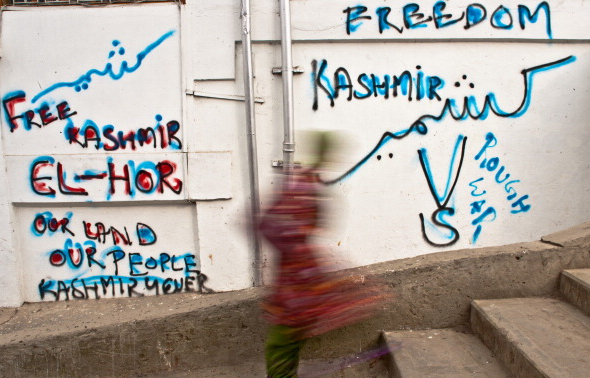
On South Asian Elections:
With several important elections in South Asia looming (Pakistan and Bangladesh’s general elections, Afghanistan’s parliamentary and district council elections), what should SAV readers understand about the relationship between political violence and elections in the region, and are there major trends we should monitor?
Elections and violence have long been closely connected to one another in the region: for instance, we have seen caste armies’ linkages to local politicians in Bihar, party-led communal riots in Sri Lanka, and violent party politics in Karachi, West Bengal, and Kerala. There can be remarkably porous borders between coercion and “mainstream” politics. We need to pay careful attention to how politicians may try to cultivate or control militants, and how armed groups may in turn attempt to tilt the playing field toward or away from particular parties. The same is true of the distribution of patronage and government contracts: armed actors can be beneficiaries of these resources, as well as involved in their distribution.
We need to pay careful attention to how politicians may try to cultivate or control militants, and how armed groups may in turn attempt to tilt the playing field toward or away from particular parties.
Pakistan’s upcoming elections have been fairly peaceful so far compared to the TTP’s onslaught in 2013, or the bloodshed during elections in 1990s Karachi and, to a much lesser extent, Punjab. As I discuss below, the military is the key player shaping politics right now, not armed parties or party-linked armed groups. Bangladesh is a much likelier site of serious electoral violence, given the long history of party-led violence and the politicization of state security forces (as we saw in 2014). I suspect Afghanistan’s elections will involve a blend of insurgent targeting by the Taliban with local power struggles among nominally pro-state armed groups; this will make it harder to discern which violence is driven by electoral logics as opposed to broader efforts to undermine the government.
It is not impossible that we’d see escalated violence in the run-up to India’s 2019 general election. Though political violence in India in general has decreased, West Bengal under the Trinamool continues to involve high levels of violence around elections (largely by the Trinamool’s specialists in violence), the left-right war in parts of Kerala marches on, and Hindu nationalist vigilantism has the potential to dramatically escalate.
It has been argued that foreign policy is not a particularly salient electoral issue in South Asia, because the electorate is more concerned with governance and is not necessarily knowledgeable or interested in foreign policy. However, in a recent paper with Vipin Narang, you argue otherwise. Can you identify foreign policy issues with respect to India where there are constraints placed on politicians due to mass public opinion?
My paper with Vipin Narang argues that sometimes foreign policy matters in domestic political competition – and sometimes it doesn’t. It’s an invitation to scholars and analysts to think more carefully about when and how foreign policy matters – we outline four “accountability environments” that elected leaders can face on foreign policy issues. One useful thing about this approach is that it lets us disaggregate across issues within the same political system, as well as letting us compare across democracies. We argue that in India, foreign policy issues linked to Pakistan are the most salient – Pakistan, and the dispute over Kashmir, are hard-wired into domestic-political debates over, and definitions of, Indian nationalism. These issues have resonance and meaning even among citizens who don’t follow the intricacies of foreign policy.
In India, foreign policy issues linked to Pakistan are the most salient – Pakistan, and the dispute over Kashmir, are hard-wired into domestic-political debates over, and definitions of, Indian nationalism.
But most other foreign policy issues are generally not very important in electoral politics, and thus marginal to the incentives and strategies of politicians. China can pop up in importance around territorial disputes, and the U.S.-India nuclear deal briefly became relevant in 2008, but for the most part foreign policy just doesn’t much matter in hard-fought elections, especially the crucial state contests. This means that many foreign policy issues don’t create strong incentives for politicians to devote time and resources to them.
This helps us understand why, for instance, weapons development projects that should be a top priority in a realist conception of national security in fact languish over decades. This claim isn’t at all unique to India; we think the relationship between democracy and foreign policy in general is characterized by far more variation than some prominent claims in the international relations literature can grapple with.
On U.S.-Pakistan Relations:
After President Trump’s announcement of the New South Asia policy and the negative reaction from Pakistan, there has been speculation that Pakistan and the United States may be going their separate ways, with Pakistan leaning towards China and the United States deepening its partnership with India. What can you say about the future trajectory of U.S.-Pakistan relations?
The American tilt to India is here to stay – demography, economics, and broader Asia strategy all make India a much more attractive long-term partner than Pakistan. India is larger, wealthier, and more pivotal. Other than counterterrorism and the endless war in Afghanistan, Pakistan doesn’t have much to strategically offer the United States. As I noted above, the United States is wise to work with India, even if there are significant limits to the closeness of that relationship. That said, counterterrorism and Afghanistan remain high American priorities in the short-to-medium-term.
The American tilt to India is here to stay – demography, economics, and broader Asia strategy all make India a much more attractive long-term partner than Pakistan…Other than counterterrorism and the endless war in Afghanistan, Pakistan doesn’t have much to strategically offer the United States.
The Trump team has engaged in some coercion toward Pakistan, but seems to have so much else going on that the follow-through is highly suspect. This has led to a continued drift in U.S.-Pakistan relations, but not a dramatic rupture. The Chinese are certainly closer partners with Pakistan through the China-Pakistan Economic Corridor (CPEC). I am very curious to see how long that lasts, but it is certainly an important shift.
I expect the United States and Pakistan to maintain functional relations as they continue to drift in different directions. The stakes are high enough for both to want to avoid a huge rift; nevertheless, both seem content to escape the dysfunctional intimacy of the Musharraf years. I think this may actually be a good outcome: a more normal, straightforwardly transactional relationship between Pakistan and the United States would limit the power of both sides’ narratives of betrayal and abandonment. Sometimes a matter-of-fact divorce is better than a disastrous marriage.
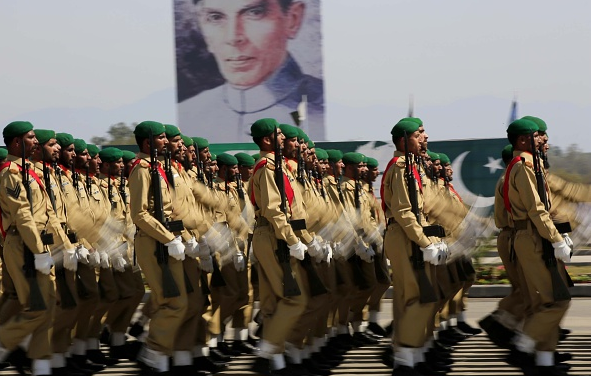
On Civil-Military Relations in South Asia:
Could you talk briefly about the enduring and powerful role of the military in the politics of South Asia, especially in Pakistan and even Myanmar, and what this tells us about the limits of democracy in these states?
The militaries in both Pakistan and Myanmar have managed transitions to formal electoral democracy while preserving key prerogatives. The Pakistan Army – despite being technically withdrawn to the barracks – maintains high degrees of influence over mainstream politics. It also has a substantial economic footprint that provides material resources and employment opportunities for retired officers and soldiers. In the run-up to July’s general election, we have the military trying to deeply shape the outcome by restricting the spread of information and, allegedly, contributing to the fragmentation of the Pakistan Muslim League-(Nawaz) (PML-N) and Muttahida Qaumi Movement (MQM). The goal appears to be an electoral outcome that looks adequately democratic while not in any way providing the basis for the new government to challenge the military. A fractured mandate and/or a pliable PM would kill two birds with one stone: the military could remain formally out of power while still being the central political player in the country. The striking thing about this outcome – distinct from Myanmar – is that it has occurred even without a formal institutional granting of power to the military.
The goal appears to be an electoral outcome that looks adequately democratic while not in any way providing the basis for the new government to challenge the military…The striking thing about this outcome…is that it has occurred even without a formal institutional granting power to the military.
The military remains powerful in Myanmar as well. It has institutionalized a major presence in parliament as well as indefinite control of the defense, border, and home affairs ministries. This means it controls the key levers of power in internal security. Like Pakistan, the military has a substantial presence in Myanmar’s economy. Electoral politics remain meaningful on other topics, such as service provision and redistribution, but there is a very hard set of constraints on what elected leaders can do.
The international community has become less tolerant of coups over time. While they do still occur – Egypt, Thailand, Bangladesh all have recent experience – it is much more efficient for militaries to be able to manipulate and control politics without having to directly rule. This is precisely what the militaries in Pakistan and Myanmar have been able to achieve.
On Religious Majoritarianism:
You wrote an interesting blog post earlier this year titled “Threat Perception among Hindu and Buddhist Nationalists.” Could you talk more about the trend of growing religious majoritarianism in South Asia, and how you see this evolving?
The impetus for that post was a sense that we don’t often take Hindu and Buddhist nationalists seriously enough, even when criticizing them. For my current book project, I’ve spent a lot of time reading about these movements – they are political projects with long histories and substantial support. Understanding the broad contours of their worldviews is essential for making sense of the policies they pursue, whether in power as governments or as non-state actors. For instance, the outrage by the international community over the mass displacement and repression of the Rohingya in Rakhine state simply isn’t echoed within Myanmar itself. These movements see themselves as victims, not aggressors; as historically-rooted sons of the soil, rather than as internal colonizers bent on dominating marginalized peripheries; and as particularly disadvantaged compared to proselytizing faiths that can expand much faster. You can, and I do, disagree with many or all of these claims, but dismissing their importance will only lead to analytical failure.
These movements see themselves as victims, not aggressors; as historically-rooted sons of the soil, rather than as internal colonizers bent on dominating marginalized peripheries; and as particularly disadvantaged compared to proselytizing faiths that can expand much faster.
What is the future of these movements? The BJP and broader sangh parivar will face a real test in the 2019 general election if the economy doesn’t pick up and the opposition is able to coordinate, but they have already achieved important shifts in the basic orientation of Indian politics, whether or not Modi is re-elected. Hindu nationalism is not hegemonic, but it has come a very long way from 1947. In Myanmar, the ultra-hard liners are not going to be at the center of any political party – but they will be able to exert major rhetorical and mobilization pressure against mainstream politicians. These movements will wax and wane in power, but will remain key forces within each country’s politics.
***
Image 1: Al Jazeera English via Flickr
Image 2: Yawar Nazir via Getty
Image 3: Andolu Agency via Getty
